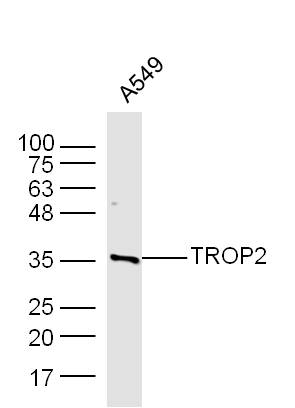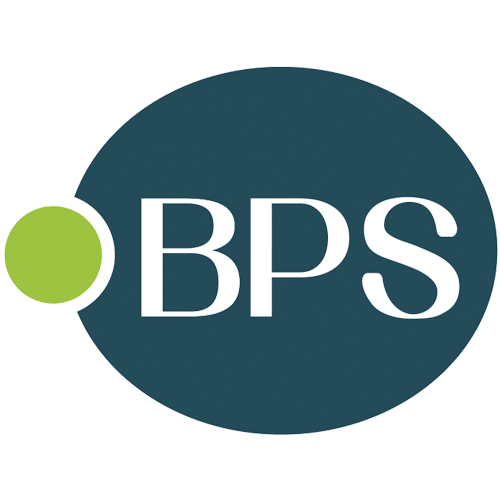![TACSTD2 / TROP2 (Epithelial Marker) (TACSTD2/2153), CF405S conjugate, 0.1mg/mL [26628-22-8] TACSTD2 / TROP2 (Epithelial Marker) (TACSTD2/2153), CF405S conjugate, 0.1mg/mL [26628-22-8]](https://biotium.com/wp-content/uploads/2018/10/BNUB2153.jpeg)
TACSTD2 / TROP2 (Epithelial Marker) (TACSTD2/2153), CF405S conjugate, 0.1mg/mL [26628-22-8]
BNC042153
ApplicationsImmunoHistoChemistry, ImmunoHistoChemistry Paraffin
Product group Antibodies
TargetTACSTD2
Overview
- SupplierBiotium
- Product NameTACSTD2 / TROP2 (Epithelial Marker) (TACSTD2/2153), CF405S conjugate, 0.1mg/mL [26628-22-8]
- Delivery Days Customer9
- ApplicationsImmunoHistoChemistry, ImmunoHistoChemistry Paraffin
- CertificationResearch Use Only
- ClonalityMonoclonal
- Clone IDTACSTD2/2153
- Concentration0.1 mg/ml
- ConjugateOther Conjugate
- Gene ID4070
- Target nameTACSTD2
- Target descriptiontumor associated calcium signal transducer 2
- Target synonymsEGP-1, EGP1, GA733-1, GA7331, GP50, M1S1, TROP2, tumor-associated calcium signal transducer 2, 40kD glycoprotein, identified by monoclonal antibody GA733, cell surface glycoprotein TROP2, cell surface glycoprotein Trop-2, epithelial glycoprotein-1, gastrointestinal tumor-associated antigen GA7331, membrane component, chromosome 1, surface marker 1, pancreatic carcinoma marker protein GA733-1, pancreatic carcinoma marker protein GA7331, trophoblast cell surface antigen 2
- HostMouse
- IsotypeIgG1
- Protein IDP09758
- Protein NameTumor-associated calcium signal transducer 2
- Scientific DescriptionTACSTD2 is a cell surface glycoprotein receptor. It is a single pass type I membrane protein containing one thyroglobulin type-1 domain, an epidermal growth factor-like repeat, a phosphatidylinositol binding site and tyrosine phosphorylation sites near the C-terminus. It plays a role intransducing intracellular calcium signals. It is expressed in trophoblast cells, cornea and multi-stratified epithelia. It is also highly expressed in several types of tumors and is involved in regulating the growth of carcinoma cells.Primary antibodies are available purified, or with a selection of fluorescent CF® Dyes and other labels. CF® Dyes offer exceptional brightness and photostability. Note: Conjugates of blue fluorescent dyes like CF®405S and CF®405M are not recommended for detecting low abundance targets, because blue dyes have lower fluorescence and can give higher non-specific background than other dye colors.
- SourceAnimal
- Storage Instruction2°C to 8°C
- UNSPSC12352203

![TACSTD2 / TROP2 (Epithelial Marker) (TACSTD2/2153), CF405S conjugate, 0.1mg/mL [26628-22-8] TACSTD2 / TROP2 (Epithelial Marker) (TACSTD2/2153), CF405S conjugate, 0.1mg/mL [26628-22-8]](https://biotium.com/wp-content/uploads/2018/10/BNUB2153-1.jpeg)
![TACSTD2 / TROP2 (Epithelial Marker) (TACSTD2/2153), CF405S conjugate, 0.1mg/mL [26628-22-8] TACSTD2 / TROP2 (Epithelial Marker) (TACSTD2/2153), CF405S conjugate, 0.1mg/mL [26628-22-8]](https://biotium.com/wp-content/uploads/2018/10/BNUB2153-2.jpeg)
![TACSTD2 / TROP2 (Epithelial Marker) (TACSTD2/2153), CF405S conjugate, 0.1mg/mL [26628-22-8] TACSTD2 / TROP2 (Epithelial Marker) (TACSTD2/2153), CF405S conjugate, 0.1mg/mL [26628-22-8]](https://biotium.com/wp-content/uploads/2018/10/BNUB2153-3.jpeg)
![TACSTD2 / TROP2 (Epithelial Marker) (TACSTD2/2153), CF405S conjugate, 0.1mg/mL [26628-22-8] TACSTD2 / TROP2 (Epithelial Marker) (TACSTD2/2153), CF405S conjugate, 0.1mg/mL [26628-22-8]](https://biotium.com/wp-content/uploads/2018/10/BNUB2153-4.jpeg)
![TACSTD2 / TROP2 (Epithelial Marker) (TACSTD2/2153), CF405S conjugate, 0.1mg/mL [26628-22-8] TACSTD2 / TROP2 (Epithelial Marker) (TACSTD2/2153), CF405S conjugate, 0.1mg/mL [26628-22-8]](https://biotium.com/wp-content/uploads/2018/10/BNUB2153-5.jpeg)





